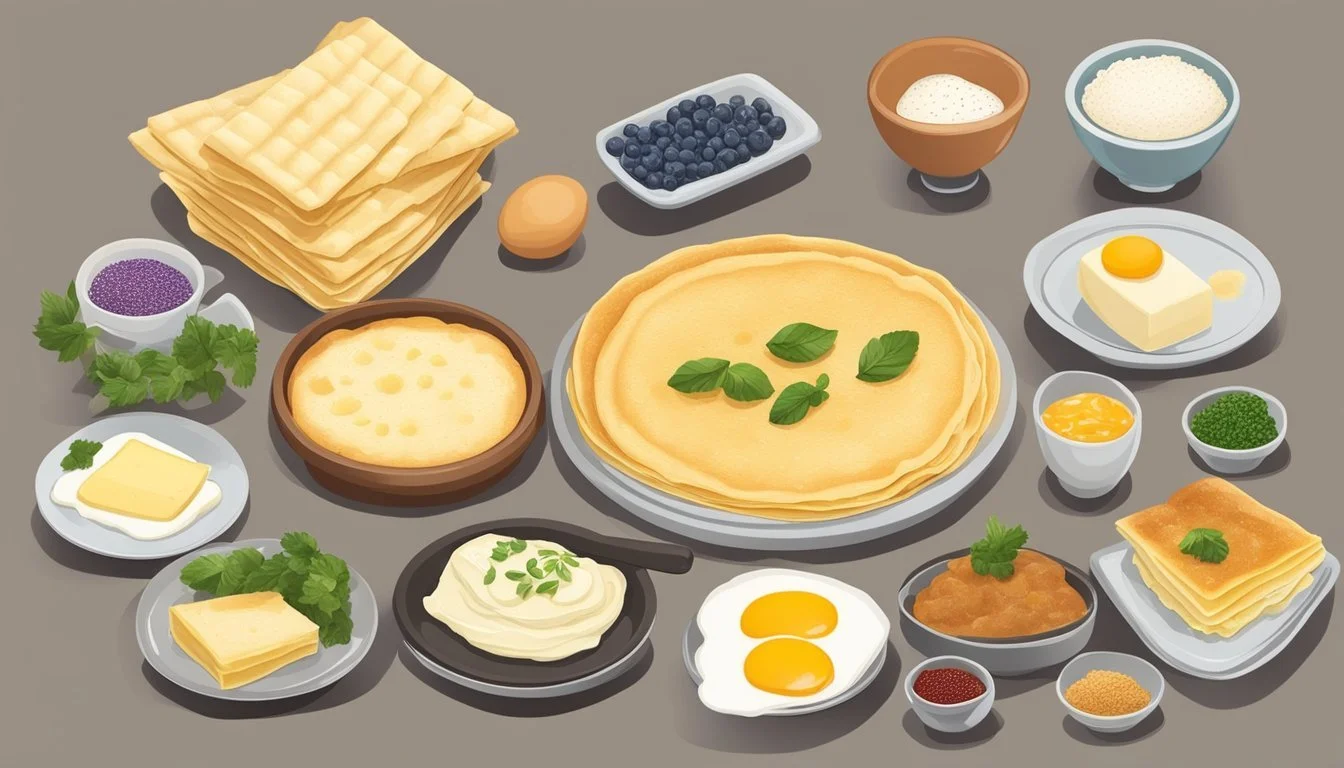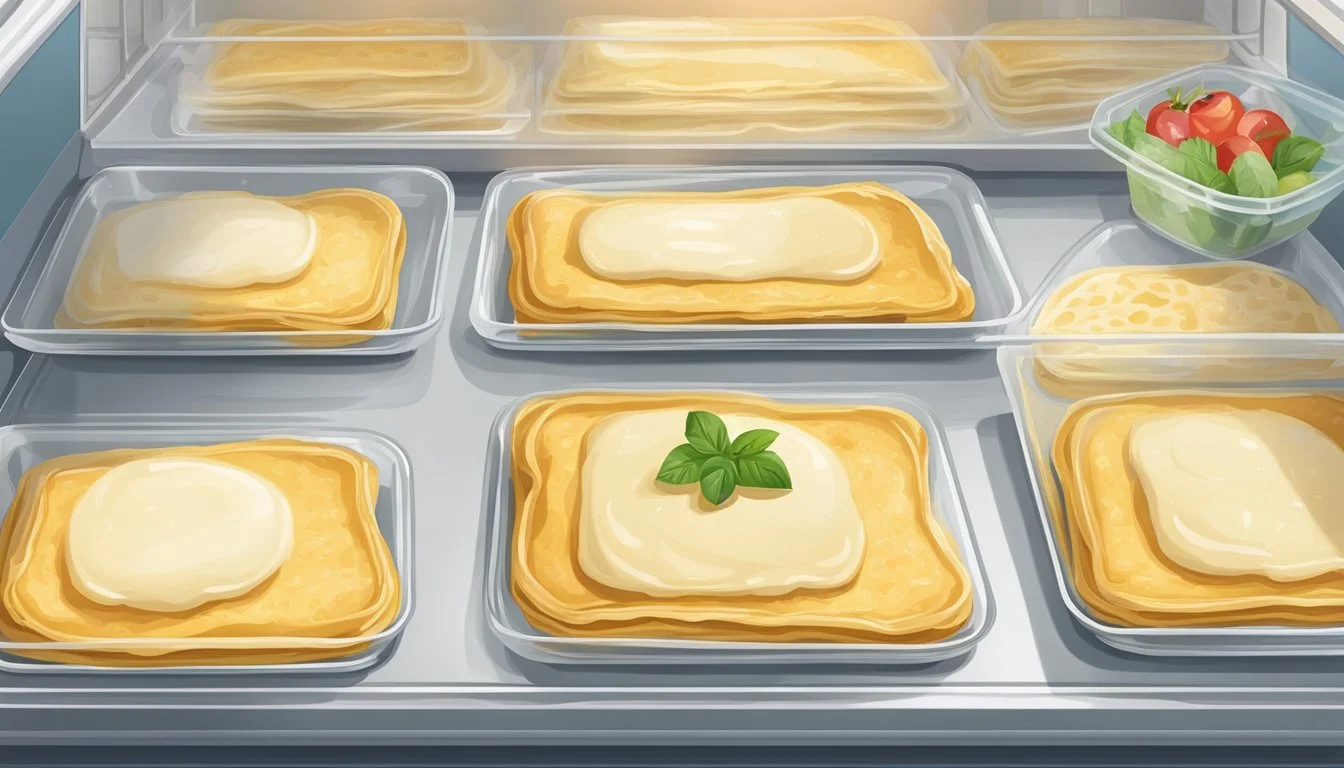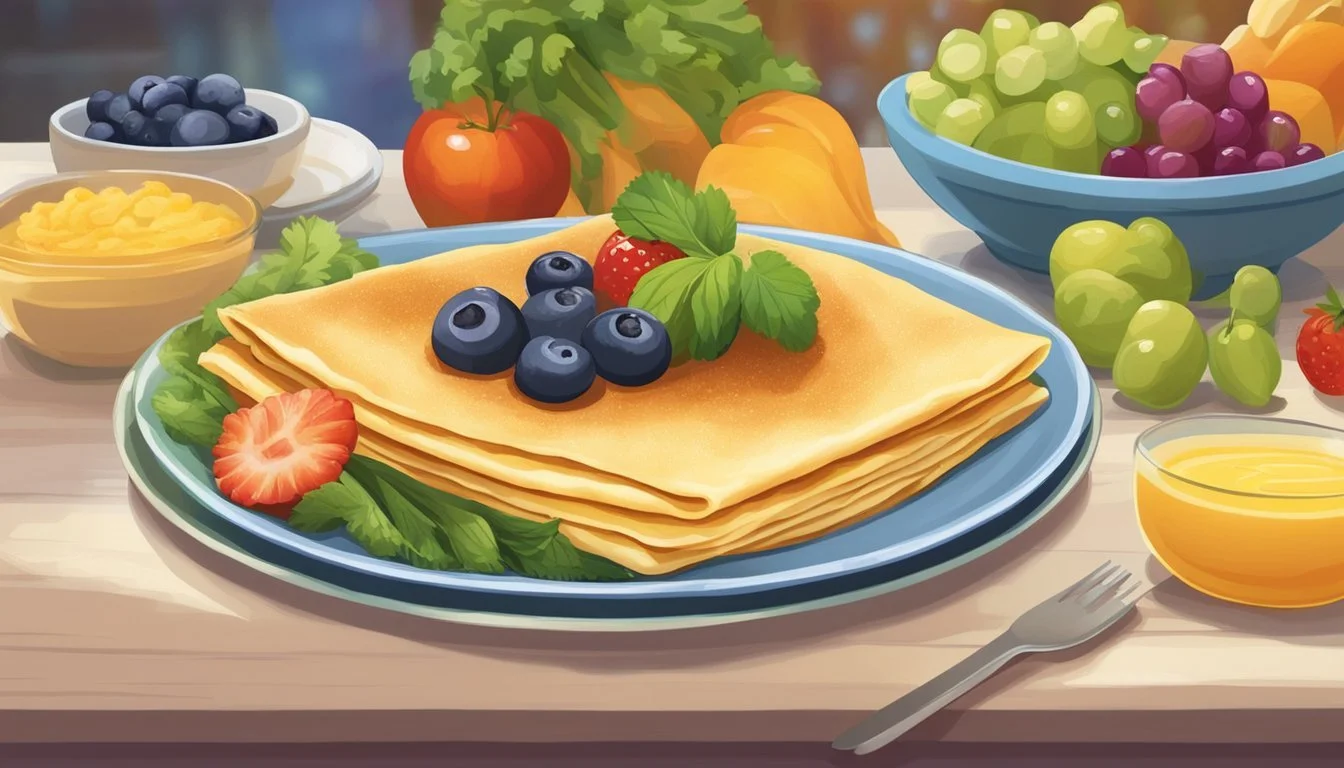How Long Do Freshly Prepared Blintzes Last?
Shelf Life and Storage Tips
Blintzes are a delightful and versatile dish that can be served sweet or savory, making them a suitable addition to any breakfast menu or a favorite during Jewish festivals such as Shavuot. Derived from the traditional crepe, they consist of a thin pancake wrapped around a filling, often cheese or fruit, delivering a harmonious blend of flavors and textures. The process of making blintzes involves creating the delicate pancake batter, frying it to golden perfection, and then filling it with the chosen ingredients before the final cooking stage, which can include frying or baking.
In terms of freshness and storage, freshly prepared blintzes are best enjoyed within a short time frame to maintain their optimal taste and texture. Blintzes embody a taste of traditional Jewish cuisine and the warmth of homemade cooking, but as with any freshly made fare, their shelf life is limited. Those who invest the effort into crafting homemade blintzes are often curious about how long they can savor their creations and what the best practices are for preserving their freshness.
Considering the dairy components that are often present in blintze fillings, especially in the popular cheese blintzes, it becomes crucial to store them correctly. Proper handling and storage are key to prolonging the life of blintzes, whether they are kept in the refrigerator or the freezer. The decision to freeze blintzes, either before or after they are fully cooked, can also significantly impact their longevity and the methods of reheating them for future enjoyment.
Ingredients and Variations
The key to versatile and delectable blintzes lies in the selection of high-quality ingredients and the variety of fillings, which can cater to both sweet and savory preferences.
Choosing Quality Ingredients
To ensure the best results, freshness and quality are paramount when selecting ingredients for blintzes. A basic blintz batter includes all-purpose flour, whole milk, eggs, and butter or vegetable oil, with an option to add a touch of vanilla extract for flavor. For the fillings, fresh ricotta cheese, cream cheese (how long does cream cheese last?), or cottage cheese (how long does cottage cheese last?)serve as common creamy bases, often enhanced with egg yolk and granulated sugar for sweetness and structure. The use of kosher salt or just a pinch of sea salt can balance the flavors.
Types of Fillings
Blintz fillings vary widely, but they often fall into these categories:
Cheese fillings: Incorporate creamy cheese like ricotta, cream cheese, or cottage cheese, and enrich with sugar, vanilla, and an egg yolk.
Fruit fillings: Use fresh fruit like apples, blueberries, or raisins, or a homemade berry compote or jam.
Sweetened fillings: Enhance cheese or fruit fillings with cinnamon, sugar, or even lemon zest for extra flavor.
Savory Vs. Sweet Options
Blintzes can be tailored to taste. Here's how:
Sweet variants: Typically involve a dusting of powdered sugar, a dollop of sour cream, and berry sauce or jam.
Savory variants: May include ingredients like smoked salmon, finely chopped herbs, or a mix of savory cheeses.
Regardless of the choice, a proper blintz is complemented with melted butter when frying or fruit sauces, yogurt, whipped cream, or applesauce when serving.
Preparation Techniques
Achieving the delicate balance of texture and flavor in blintzes begins with a precise approach to preparation. Each step, from the batter to the final garnish, is crucial for creating this classic dish.
Batter Making and Consistency
The batter is the foundation of a blintz, and achieving the right consistency is essential. One should mix the batter ingredients—typically flour, eggs, milk, and sometimes water—until smooth, with the consistency slightly thicker than that of heavy cream. Strain through a cheesecloth to remove lumps for a uniform texture. Allow the batter to rest before cooking, which helps in creating tender, thin pancakes.
Perfecting the Fold
Once the crepes are cooked, proper folding is key to a well-assembled blintz. Lay the crepe flat, place a spoonful of the cheese mixture on the lower third, fold the bottom edge to cover the filling, then fold in the sides. Finally, roll it up neatly, ensuring that the filling is fully encased and the blintz holds its shape when cooked further or served.
Cooking the Blintzes
Cooking blintzes requires a non-stick skillet or a crepe pan. Heat a small amount of unsalted butter until melted, then place the rolled blintzes seam-side down. Cook until the blintz is golden brown on both sides, which usually takes about 2-3 minutes per side. Blintzes can also be finished in the oven on a baking sheet lined with parchment paper at 350°F (177ºC) to warm through, especially if they are pre-made and chilled.
Assembling the Dish
Once the blintzes are cooked, they should be carefully transferred to a plate. For a full dish, arrange the blintzes in a single layer to preserve their shape and texture. If serving immediately, proceed to topping and garnishing; if not, blintzes can be refrigerated for short-term storage or frozen for longer keeping.
Topping and Garnishing
To elevate the blintzes, one can add a variety of toppings and garnishes. A dusting of powdered sugar, dollops of jam, or fresh berries add flavor and visual appeal. For extra indulgence, a drizzle of chocolate or a spoonful of sour cream can also be included. Toppings should complement the filling and not overpower the delicate taste of the crepe and the richness of the cheese mixture inside.
Storage and Shelf Life
Proper storage plays a crucial role in preserving the quality and safety of freshly prepared blintzes. The following guidelines cover refrigeration, freezing, and signs of spoilage to ensure optimal shelf life.
Refrigeration Guidelines
Freshly prepared blintzes can be safely stored in the refrigerator for 1 to 2 days. They should be placed in an airtight container or wrapped tightly in plastic wrap to maintain freshness. If the blintzes contain lemon juice or fresh berries, they should be consumed more promptly to prevent the filling from becoming soggy.
Freezing and Thawing Tips
For longer storage, blintzes can be frozen for up to 1 month. To freeze blintzes:
Let the blintzes cool completely after cooking.
Wrap each blintz individually in plastic wrap.
Place wrapped blintzes in a freezer-safe container or bag.
Label with the date of freezing.
When ready to eat, thaw them in the refrigerator overnight. Once thawed, reheat in the oven at 350°F until warmed through, which can help restore some of the initial texture and taste.
Signs of Spoilage
The reader should look out for the following signs to determine if blintzes have spoiled:
Odor: An off or sour smell is indicative of spoilage.
Texture: If the crepe or filling has an unusually slimy or sticky feel.
Mold: Any visible mold or discoloration on the blintzes is a clear sign they should not be consumed.
Taste: If uncertain, a small taste of the blintz can be telling, though this should be a last resort after other checks.
It is important to discard any blintzes that exhibit these signs, to avoid the risk of foodborne illness.
Nutrition and Dietary Considerations
When considering the nutritional aspects of blintzes, one needs to account for their caloric and macronutrient content, the availability of gluten-free and vegetarian options, and how they can fit into a balanced meal.
Caloric and Macronutrient Content
Blintzes typically include ingredients such as cream cheese, eggs, and butter, which are sources of fat and thus increase the caloric content. A single blintze may contain a significant amount of calories, so portion control is key for those monitoring their caloric intake. The exact macronutrient breakdown of a blintz depends on the specific recipe used, but they generally provide a combination of:
Carbohydrates: from the flour-based crepe
Protein: mainly from cream cheese and eggs
Fats: from butter and dairy
Gluten-Free and Vegetarian Options
For those with gluten sensitivities, it's important to note that traditional blintzes are made with wheat flour, which contains gluten. Gluten-free alternatives can be created using gluten-free flour blends. As for those following a vegetarian diet, blintzes are naturally vegetarian since they do not contain meat. However, they often contain dairy, making them unsuitable for vegans.
Balancing the Meal
While blintzes are rich in dairy-derived proteins, they are often served with high-sugar toppings like fruit preserves or whipped cream, which can imbalance a meal's nutritional profile. To make a more balanced meal, one could:
Choose toppings like fresh fruit or yogurt for added fiber and nutrients without excessive sugars.
Serve blintzes alongside a salad or vegetable dish to integrate essential vitamins and minerals.
Cultural Significance and Tradition
Blintzes hold a distinctive place within Jewish culinary traditions, intertwining with cultural practices and festivities. These thin, crepe-like pancakes, traditionally filled and rolled, transcend mere breakfast recipes, embodying the historical and cultural essence of the Jewish people, particularly within the Ashkenazi community.
Blintzes in Jewish Culture
Blintzes are a staple food item among Ashkenazi Jews, with their presence symbolizing more than a preferred dish. These pancakes represent a bridge to ancestral lands, particularly Eastern Europe and Russia, where the recipe has evolved with the diaspora. The customary fillings of farmer's cheese or fruit not only exhibit versatility but also reflect the ingenuity of using available local ingredients. During the Jewish holiday of Shavuot, dairy dishes like blintzes are traditionally consumed, linking the food to religious observance and the acceptance of the Torah.
Celebratory Occasions and Variants
Holidays provide an opportunity for blintzes to shine as a festive dish. They are not only reserved for Shavuot but also enjoyed during other holidays and family gatherings, where they often become a topic of conversation for their deliciousness and the care put into their preparation. The variations of blintzes are extensive, with some made savory for an entree and others sweetened for dessert. As Ashkenazi Jews immigrated internationally, their recipes for blintzes mingled with local cultures, giving rise to a tapestry of flavors that still honor their rich Jewish heritage.
Serving Suggestions
When serving blintzes, one's choices in accompaniments and presentation can significantly enhance the dining experience. The focus should be on complementing the blintzes with compatible flavors and presenting them in an appealing manner.
Accompaniments and Side Dishes
Blintzes can be served with a variety of toppings and side dishes, both sweet and savory. Here are specific recommendations:
Sweet Toppings: Traditional choices include berry sauces and jam, which can be easily made with fresh berries and a bit of sugar in a food processor. For a richer experience, pair blintzes with a dollop of sour cream or a drizzle of warm chocolate sauce.
Savory Sides: Blintzes can be complemented with smoked salmon or lox for a savory twist. Additionally, dishes like roasted asparagus or a cucumber and dill salad can provide a refreshing balance.
Presentation and Plating
The visual presentation of blintzes contributes to the overall enjoyment of the dish. Here are some techniques for plating:
Plate Arrangement: Place blintzes on a plate with enough space between them to allow for individual toppings. Utilize a light dusting of powdered sugar for a touch of elegance.
Food Processor Use: To achieve a smooth berry sauce for topping, one can puree fresh berries in a food processor until the desired consistency is reached, straining out seeds for a silkier texture.
In conclusion, selecting the right accompaniments and prioritizing an attractive presentation can elevate the humble blintz into a dish that pleases both the palate and the eye.








